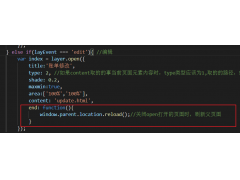Applying a background to lt;htmlgt; and/or lt;bodygt;(将背景应用到 lt;htmlgt;和/或 lt;bodygt;)
问题描述
$("#toggle").click(function(){
$("html").toggleClass("bg");
});
html.bg {
background: blue;
}
body {
background: yellow;
}
<script src="aHR0cHM6Ly9jZG5qcy5jbG91ZGZsYXJlLmNvbS9hamF4L2xpYnMvanF1ZXJ5LzMuMy4xL2pxdWVyeS5taW4uanM="></script>
<!DOCTYPE html>
<html class="bg">
<head>
</head>
<body>
Test
<br>
<button id="toggle">Toggle HTML background</button>
</body>
</html>
I found that if you apply a CSS background to body, it takes up the whole page (no matter what the actual height or width of body is).
However, if you apply a CSS background to both html and body, the background for body does not take up the whole page.
Is this discrepancy expected behavior?
How would I go about superimposing two fullscreen backgrounds (say, a background color and a semi-transparent image?)
This is correct behavior.1 In standards mode, body, as well as html, doesn't immediately take up the entire height of the viewport, even though it appears so when you only apply a background to the latter. In fact, the html element will take on the background of body if you don't give it its own background, and html will pass this on to the canvas:
The background of the root element becomes the background of the canvas and its background painting area extends to cover the entire canvas, although any images are sized and positioned relative to the root element as if they were painted for that element alone. (In other words, the background positioning area is determined as for the root element.) If the root's ‘background-color’ value is ‘transparent’, the canvas's background color is UA dependent. The root element does not paint this background again, i.e., the used value of its background is transparent.
For documents whose root element is an HTML
HTMLelement or an XHTMLhtmlelement: if the computed value of ‘background-image’ on the root element is ‘none’ and its ‘background-color’ is ‘transparent’, user agents must instead propagate the computed values of the background properties from that element's first HTMLBODYor XHTMLbodychild element. The used values of thatBODYelement's background properties are their initial values, and the propagated values are treated as if they were specified on the root element. It is recommended that authors of HTML documents specify the canvas background for theBODYelement rather than theHTMLelement.
That said, however, you can superimpose any background image over a background color on a single element (either html or body), without having to rely on two elements — simply use background-color and background-image or combine them in the background shorthand property:
body {
background: #ddd url(background.png) center top no-repeat;
}
If you wish to combine two background images, you need to rely on multiple backgrounds. There are chiefly two days to do this:
In CSS2, this is where styling both elements comes in handy: simply set a background image to
htmland another image tobodywhich you wish to superimpose over the first. To ensure the background image onbodydisplays at full viewport height, you need to applyheightandmin-heightrespectively as well:html { height: 100%; background: #ddd url(background1.png) repeat; } body { min-height: 100%; background: transparent url(background2.png) center top no-repeat; }Incidentally, the reason why you have to specify
heightandmin-heighttohtmlandbodyrespectively is because neither element has any intrinsic height. Both areheight: autoby default. It is the viewport that has 100% height, soheight: 100%is taken from the viewport, then applied tobodyas a minimum to allow for scrolling of content.In CSS3, the syntax has been extended so you can declare multiple background values in a single property, eliminating the need to apply backgrounds to multiple elements (or adjust
height/min-height):body { background: url(background2.png) center top no-repeat, #ddd url(background1.png) repeat; }The only caveat is that in a single multi-layered background, only the bottommost layer may have a background color. You can see in this example that the
transparentvalue is missing from the upper layer.And don't worry — the behavior specified above with propagating background values works exactly the same even if you use multi-layered backgrounds.
If you need to support older browsers, though, you'll need to go with the CSS2 method, which is supported all the way back to IE7.
My comments under this other answer explain, with an accompanying fiddle, how body is actually offset from html by default margins even though it looks like it's being padded out instead, again owing to this seemingly strange phenomenon.
1 This may have its roots in setting the HTML background and bgcolor attributes of body causing the background attribute to apply to the entire viewport. More on that here.
这篇关于将背景应用到 <html>和/或 <body>的文章就介绍到这了,希望我们推荐的答案对大家有所帮助,也希望大家多多支持编程学习网!
本文标题为:将背景应用到 <html>和/或 <body>


- 如何向 ipc 渲染器发送添加回调 2022-01-01
- 从原点悬停时触发 translateY() 2022-01-01
- 为什么我的页面无法在 Github 上加载? 2022-01-01
- 在不使用循环的情况下查找数字数组中的一项 2022-01-01
- 为什么悬停在委托事件处理程序中不起作用? 2022-01-01
- 是否可以将标志传递给 Gulp 以使其以不同的方式 2022-01-01
- 使用 iframe URL 的 jQuery UI 对话框 2022-01-01
- 我不能使用 json 使用 react 向我的 web api 发出 Post 请求 2022-01-01
- 如何显示带有换行符的文本标签? 2022-01-01
- 如何调试 CSS/Javascript 悬停问题 2022-01-01









